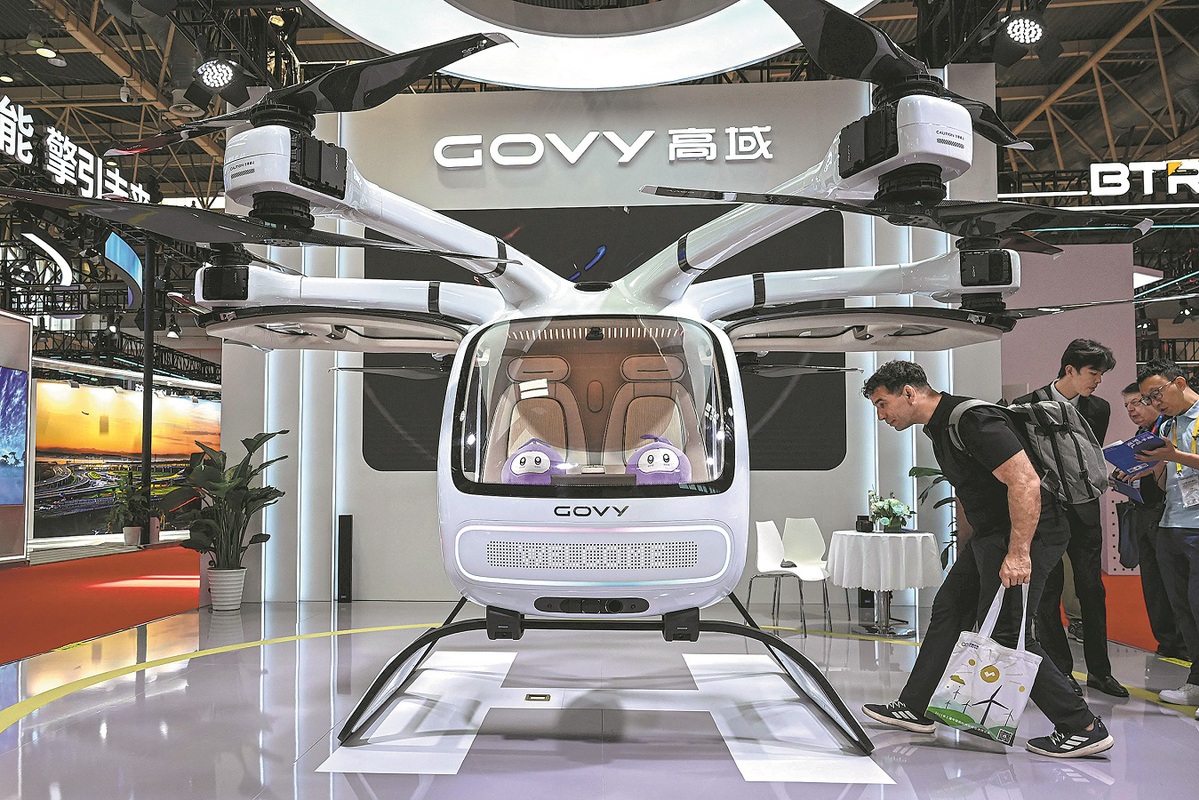Country's low-altitude economy aims sky high
Tourism, agriculture, logistics expected to drive strong growth, experts say


Booking an "air taxi" for intercity commuting and sightseeing tours, and drones making food and parcel deliveries are no longer scenarios from the future. They are already gradually becoming part of everyday life for people in China.
The nation's low-altitude sector — regarded as a strategic emerging industry — is poised to see robust growth in the coming years, fueled by commercial applications across a wide range of fields, such as passenger transportation, tourism, agriculture and logistics, coupled with supportive measures from authorities, experts said.
Sharper focus on developing the low-altitude economy will alleviate urban traffic congestion and foster new economic growth drivers, as the sector realizes immense development potential, they added.
However, more efforts should be made to improve rules and regulatory policies regarding the safe operation of unmanned aerial vehicles and other low-altitude flight activities, the experts said. Construction of ground infrastructure, including takeoff and landing sites and maintenance centers, should also be accelerated.
The market scale of China's low-altitude economy will reach 1.5 trillion yuan ($209.9 billion) in 2025 and rise to 3.5 trillion yuan in 2035, according to data from the Civil Aviation Administration of China. The low-altitude economy encompasses civil piloted and unpiloted aviation activities within an airspace extending up to 3,000 meters, and includes aircraft manufacturing, low-altitude flight operations and integrated services.
Chinese manufacturers of unmanned aerial vehicles, or drones, are stepping up efforts to bolster the development of this economy and expand their application in various fields, such as aerial tourism, geological surveying and mapping, agriculture, public security, aerial logistics and even disaster relief.
Great opportunities
Urban air mobility technology company EHang Holdings is accelerating efforts to drive the commercial use of electric vertical takeoff and landing aircraft in aerial sightseeing, tourism and logistics.
Referred to as air taxis, eVTOL aircraft do not require traditional airports or runways. Similar to helicopters, they take off vertically and transition into fixed-wing flight mode in the air, and offer a promising air traffic and sightseeing experience while traversing congested big cities.
EHang has been granted one of the first air operator certificates for civil human-carrying pilotless aerial vehicles by the Civil Aviation Administration of China. The certification marks a significant step toward the commercialization and mass adoption of low-altitude human-carrying flight services.
Consumers will be able to purchase flight tickets for low-altitude tourism and urban sightseeing, and enjoy a range of commercial human-carrying flight services at sites in Guangzhou, Guangdong province, and Hefei, Anhui province.
Hu Huazhi, founder, chairman and CEO of EHang, said the low-altitude economy and related sectors present a significant market opportunity for urban air mobility development, and serve as a new engine for future growth in China.
He added that the company hopes to introduce safe and reliable pilotless eVTOL aircraft and offer autonomous and eco-friendly air mobility services.
In June, EHang received a purchase order for 50 units of its EH216-S pilotless eVTOL aircraft from Guizhou Scenic Tourism Development Co. The aircraft will be deployed in scenic areas in Guizhou province to offer low-altitude aerial tourism and sightseeing services, while low-altitude tourism opportunities will also be explored.
In August, the company announced that its VT20, a logistics eVTOL, had successfully completed an intercity cargo delivery roundtrip between Zhuhai and Guangzhou in the Guangdong-Hong Kong-Macao Greater Bay Area.
The groundbreaking flight covered 83 kilometers and lasted approximately 55 minutes. This significantly enhances logistics efficiency between the two cities, both in Guangdong province, saving up to 40 minutes compared with road transportation, and over an hour during traffic congestion periods, the company said.
According to a report by market research company CCID Consulting, China's eVTOL industry will maintain rapid growth in the next few years, with the market size hitting 9.5 billion yuan in 2026, driven by the speedy issuance of airworthiness certifications by authorities.
Global market consultancy Roland Berger estimated that there will be up to 3,000 air taxis in operation worldwide by 2025, and this figure will increase exponentially to 100,000 by 2050.
Yu Zhanfu, a partner at Roland Berger, said that compared with traditional helicopters, eVTOL aircraft are smaller, lighter, and require less space for takeoffs and landings. They also have lower operating costs, which will give a big boost to their popularity.


















